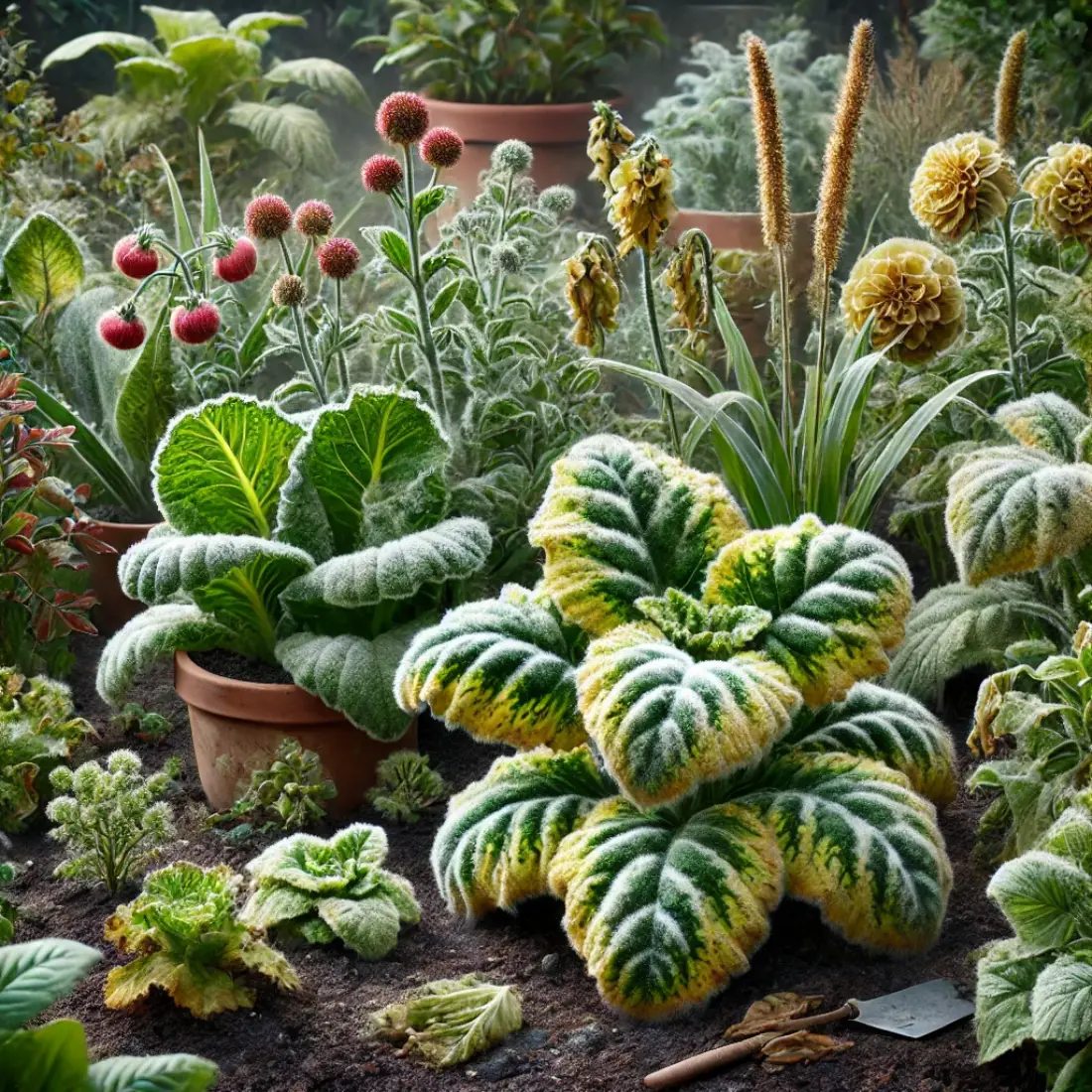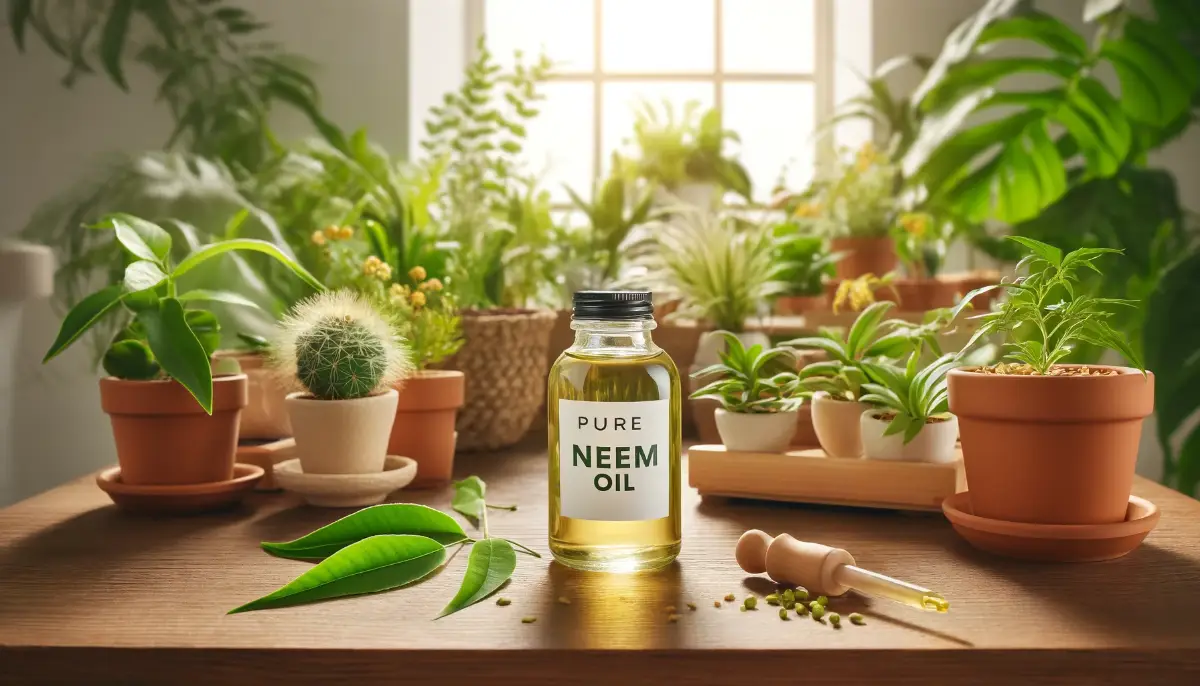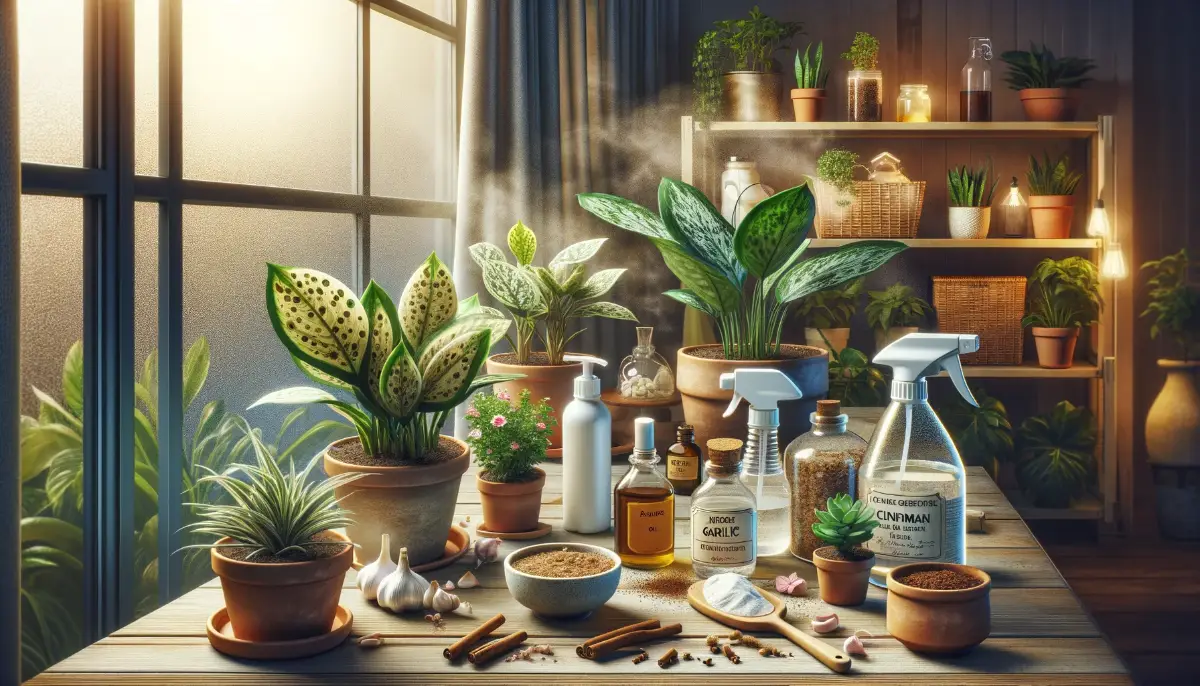Downy mildew is a pervasive plant disease caused by various fungal-like organisms, often affecting a wide range of plants, from vegetables to ornamental flowers. It’s characterized by yellowing leaves and a distinctive fuzzy mold on the underside, leading to weakened plants and reduced yields.
Treating downy mildew organically is crucial for maintaining a healthy garden ecosystem without relying on harsh chemicals.
- Identify Early: Recognize the early signs of downy mildew, such as yellow spots on leaves and white or grayish fungal growth, to address the issue promptly.
- Preventative Measures: Implement preventive practices like proper plant spacing, choosing resistant plant varieties, ensuring good air circulation, and maintaining plant health through proper watering and crop rotation.
- Organic Treatments: Use effective organic treatments such as neem oil, baking soda solution, garlic extract to manage downy mildew without harmful chemicals.
- Biological Controls: Employ beneficial microorganisms like Trichoderma and Bacillus subtilis, and attract natural predators such as ladybugs and lacewings to naturally combat downy mildew.
- Cultural Practices: Adopt cultural practices like mulching, pruning infected plant parts, and proper fertilization to create an environment less conducive to downy mildew.
What is Downy Mildew?
Downy mildew is a common and destructive plant disease caused by a group of fungal-like organisms known as oomycetes. These pathogens thrive in cool, moist environments and can affect a wide range of plants, including vegetables, fruits, and ornamental species.
Unlike true fungi, oomycetes have unique biological characteristics that influence their development and the way they infect plants. Downy mildew typically flourishes under specific environmental conditions:
- Weather Conditions: High humidity and cool temperatures create an ideal environment for downy mildew to spread. Rain, fog, and prolonged leaf wetness can exacerbate the disease.
- Plant Susceptibility: Certain plants are more prone to downy mildew, especially those with dense foliage that retains moisture. Overcrowded plantings and poor air circulation further increase susceptibility.
Identifying Downy Mildew
Recognizing downy mildew early is essential for effective treatment and prevention. Here are the key signs and symptoms to help you identify this plant disease:
Signs and Symptoms
- Yellow Spots on Leaves: One of the earliest signs of downy mildew is the appearance of yellow, angular spots on the upper surface of leaves. These spots can vary in size and may become brown and necrotic over time.
- Fuzzy Mold on Underside of Leaves: A distinctive feature of downy mildew is the presence of white, grayish, or sometimes purple fuzzy mold on the underside of affected leaves. This mold consists of sporangia, which are the reproductive structures of the pathogen.
- Leaf Curling and Distortion: As the disease progresses, leaves may start to curl and become distorted. Severe infections can lead to leaf drop and overall plant decline.
- Stunted Growth: Downy mildew can inhibit plant growth, resulting in stunted and weak plants. This is particularly problematic for crops, as it can significantly reduce yield.
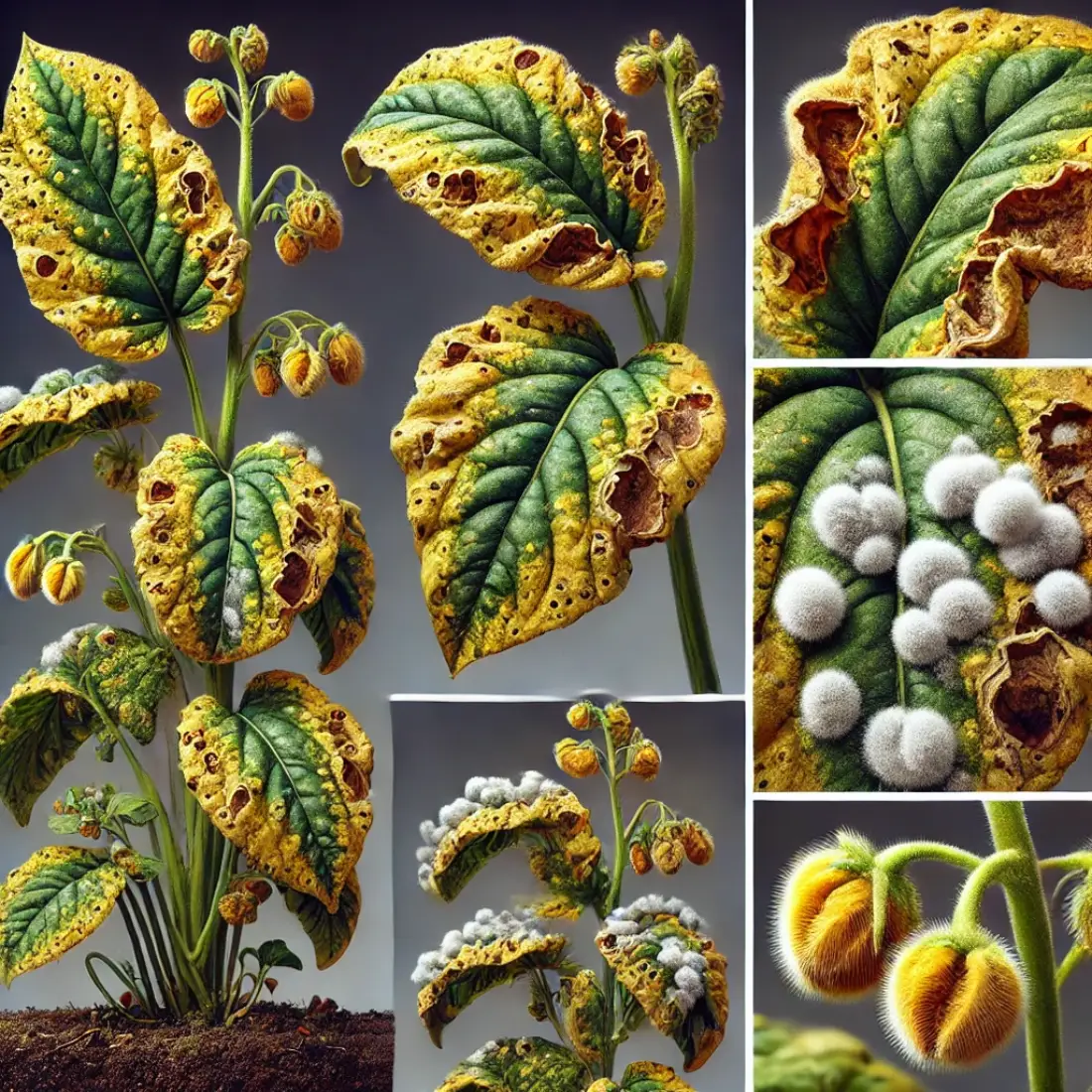
Commonly Affected Plants
Downy mildew can affect a wide range of plants, but some are particularly susceptible:
- Grapes: Downy mildew is a major concern for grape growers, as it can severely impact both the foliage and the fruit.
- Cucumbers: This disease is common in cucumbers, causing leaf damage and reducing fruit quality.
- Roses: Ornamental plants like roses are also prone to downy mildew, which can affect their aesthetic value and health.
- Lettuce: Leafy greens such as lettuce can suffer from downy mildew, leading to unmarketable crops.
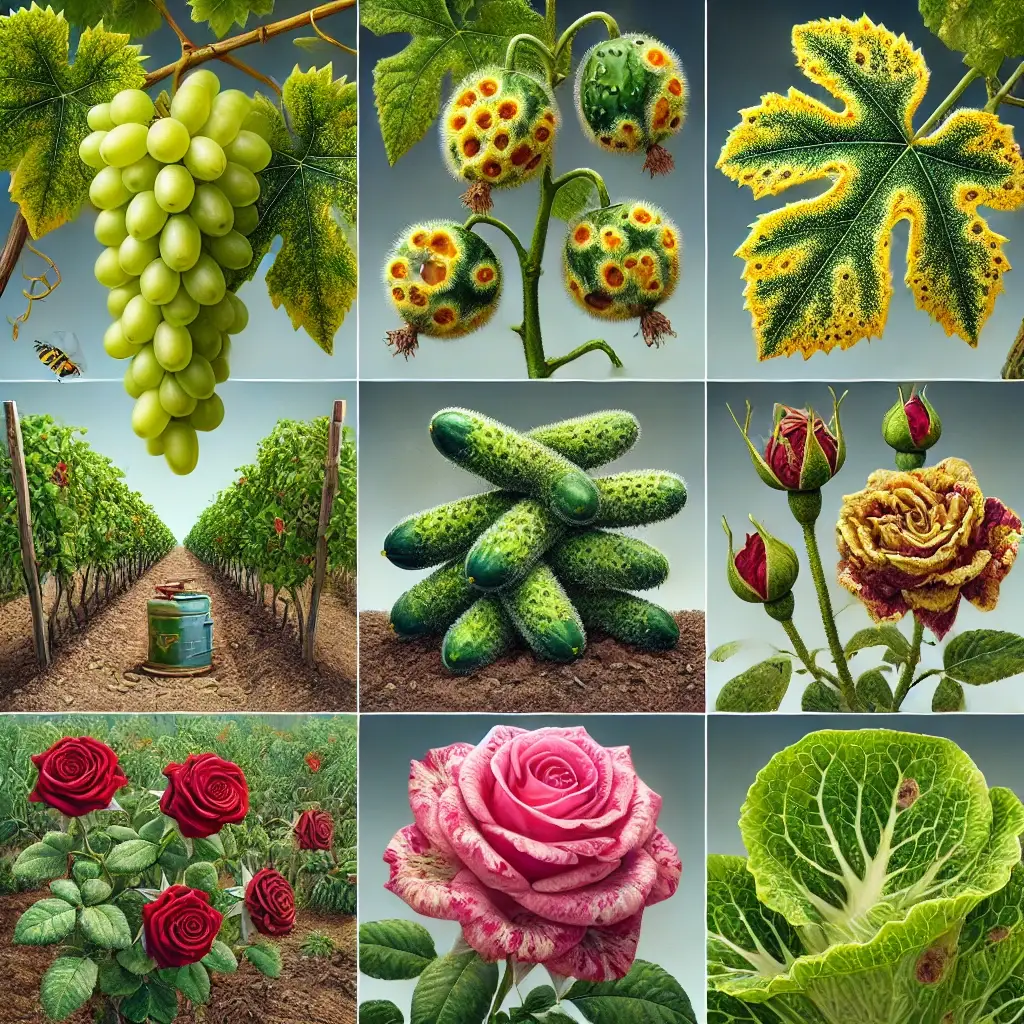
Organic Treatments for Downy Mildew
Treating downy mildew organically involves using natural remedies and practices that are safe for the environment and effective in managing the disease. Here are several proven organic treatments:
Neem Oil
- How Neem Oil Works: Neem oil, derived from the seeds of the neem tree, has antifungal properties that disrupt the life cycle of downy mildew pathogens. It interferes with the reproduction and growth of the spores, effectively controlling the spread of the disease.
- Application Methods: Mix neem oil with water and a few drops of liquid soap to help it adhere to the leaves. Spray the solution thoroughly on the affected plants, ensuring both the upper and lower surfaces of the leaves are covered. Reapply every 7-14 days, especially after rain or heavy dew.
Baking Soda Solution
- Preparation and Application: A simple and effective treatment, baking soda raises the pH on the leaf surface, creating an inhospitable environment for downy mildew. Mix 1 tablespoon of baking soda with 1 gallon of water, and add a few drops of liquid soap as a surfactant. Spray this solution on the affected plants weekly.
- Effectiveness and Precautions: While baking soda is generally safe, excessive use can lead to leaf burn. Test on a small area before applying it broadly.
Garlic Extract
- Benefits of Garlic Extract: Garlic contains sulfur compounds with antifungal properties that can help control downy mildew. It’s a natural and readily available treatment option.
- How to Prepare and Use Garlic Extract: Crush several garlic cloves and soak them in water overnight. Strain the mixture and dilute with additional water. Spray the garlic extract on infected plants, focusing on the undersides of leaves. Reapply every 7-10 days.
Copper-Based Fungicides
- Overview of Copper Fungicides: Copper-based fungicides are widely accepted in organic gardening due to their effectiveness in controlling fungal diseases. They work by disrupting the cellular processes of the pathogen.
- Application Guidelines and Safety: Use copper fungicides according to the manufacturer’s instructions, typically as a foliar spray. While effective, overuse can lead to copper accumulation in the soil, which can be toxic to plants and soil organisms. Apply sparingly and only when necessary.
Preventative Measures
Preventing downy mildew is more effective and sustainable than treating it after an outbreak. Implementing these proactive strategies can significantly reduce the risk of downy mildew in your garden or farm:
Proper Plant Spacing
- Importance of Spacing: Adequate spacing between plants ensures good air circulation, which helps reduce humidity levels around foliage. This is crucial in preventing the moist conditions that downy mildew thrives in.
- Guidelines for Spacing: Follow the recommended spacing for each plant type. For example, space tomato plants 18-24 inches apart and cucumbers 36-60 inches apart.
Choosing Resistant Plant Varieties
- Benefits of Resistant Varieties: Some plant varieties have been bred to resist downy mildew. Using these varieties can reduce the likelihood of infection and the need for chemical treatments.
- Examples of Resistant Varieties: Look for downy mildew-resistant strains of plants such as cucumbers (e.g., ‘Marketmore 76’), grapes (e.g., ‘Frontenac’), and roses (e.g., ‘Knock Out’ series).
Ensuring Good Air Circulation
- Role of Air Circulation: Good air movement around plants helps keep foliage dry and reduces the chances of fungal spores settling and germinating.
- Techniques to Improve Circulation: Prune dense foliage, stake plants to keep them upright, and avoid overcrowding. Use fans in greenhouses to increase airflow.
Maintaining Plant Health with Proper Watering
- Watering Techniques: Water plants early in the day to allow leaves to dry before evening. Use drip irrigation or soaker hoses to deliver water directly to the soil, minimizing leaf wetness.
- Avoiding Overhead Watering: Overhead watering can increase humidity and promote the spread of downy mildew spores. If using sprinklers, water in the morning so leaves can dry quickly.
Crop Rotation Practices
- Importance of Crop Rotation: Rotating crops helps prevent the buildup of downy mildew pathogens in the soil. Avoid planting susceptible crops in the same location year after year.
- Effective Rotation Plans: Implement a 3-4 year crop rotation plan. For example, follow cucumbers with beans, then carrots, and finally brassicas before returning to cucumbers.
FAQs about Downy Mildew
What plants are most susceptible to downy mildew?
Plants that are commonly affected by downy mildew include cucumbers, grapes, lettuce, roses, and spinach. These plants often suffer due to their dense foliage, which can retain moisture and create ideal conditions for the disease.
Can downy mildew be completely eradicated?
While downy mildew can be managed and controlled, it is challenging to completely eradicate it. The focus should be on prevention and early treatment to minimize its impact.
How often should I apply organic treatments for downy mildew?
The frequency of application depends on the treatment used. Generally, organic treatments like neem oil or garlic extract should be applied every 7-14 days, especially after rain or heavy dew.
Is downy mildew harmful to humans?
Downy mildew is not harmful to humans. However, it can significantly damage plants, reducing their health and yield, which can be a concern for gardeners and farmers.
What weather conditions favor downy mildew development?
Downy mildew thrives in cool, moist conditions with high humidity. Prolonged leaf wetness from rain, dew, or overhead irrigation can promote the spread of the disease.
Can I compost plants infected with downy mildew?
It is generally not recommended to compost plants infected with downy mildew, as the pathogens can survive in the compost and re-infect plants when the compost is used in the garden.
What are some signs that my plants might have downy mildew?
Early signs of downy mildew include yellow or pale green spots on the upper surface of leaves and a white, gray, or purple fuzzy mold on the underside of leaves. Leaf curling and stunted growth are also indicators.
Are there any natural predators that help control downy mildew?
While there are no natural predators for downy mildew, beneficial microorganisms like Trichoderma and Bacillus subtilis can help control the disease. Additionally, promoting a healthy garden ecosystem with good air circulation and proper plant spacing can reduce the risk of downy mildew.
How can crop rotation help in preventing downy mildew?
Crop rotation helps prevent the buildup of downy mildew pathogens in the soil. By rotating crops and avoiding planting susceptible plants in the same location year after year, you can disrupt the disease cycle and reduce the risk of infection.
Is it necessary to remove infected plant parts?
Yes, removing and disposing of infected plant parts can help prevent the spread of downy mildew. Prune affected leaves and stems and dispose of them away from the garden to reduce the risk of reinfection.

